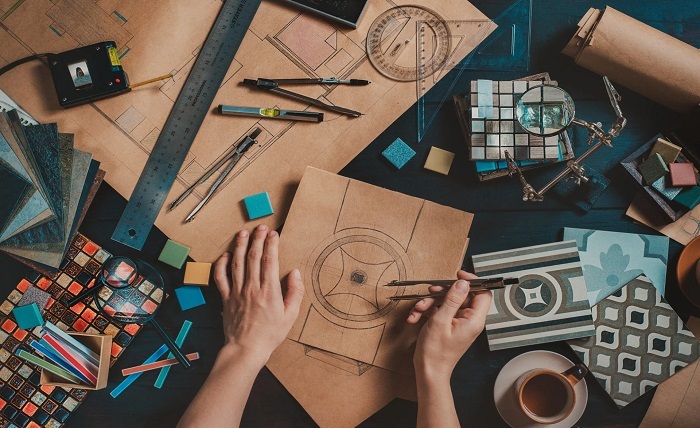In the past, only specialized people could do design work. If you needed a flyer or poster, you often had to hire a professional, wait a long time, and pay more than most small businesses could manage. Nowadays, a lot has changed. Thanks to helpful templates and AI editors, anyone can be creative even if you have never tried design before.
Good design is really about sharing your message clearly and confidently, not about using fancy techniques. These days, a brand’s look can make all the difference in whether people notice it or not. If you follow some simple tips, use the right tools, and try new things, you can create marketing materials that look polished, all on your own.
Starting with Structure: Why Templates Work
If you haven’t studied design, starting from scratch can feel overwhelming. You might wonder where to begin, what size to use, or how to balance text and images. Templates make things easier by giving you a solid starting point. They help keep everything lined up, spaced well, and organized, while still letting you be creative.
If you start using free printable design templates you can skip the tricky setup and focus on what you want to say. You’ll be able to change colors, swap fonts, and add your own images, making your design look professional and sharp. Templates aren’t just shortcuts but tools that help your design to be unique. As you get more comfortable, you can adjust and personalize them to make your work truly your own.
The Building Blocks of Great Design
Good design is more about balance and purpose than artistic talent. The main thing is to decide what you want people to notice first. A bold headline, a brief subheading, and clear supporting text help organize your layout and make it easy to follow.
Color is another key part of design. Sticking to two or three main colors keeps things balanced and avoids distractions. Right now, bold contrasts and natural shades like deep blue with warm neutrals are popular. Colors set the mood, and the right mix can really shape how people see your design.
Another point to pay attention to is typography. Fonts express personality even before anyone reads the text. Mixing too many styles can create confusion, so simplicity is key. Don’t overlook the value of white space. Empty areas around elements allow designs to breathe and make each part of your message easier to absorb.
How Modern Tools Empower Creativity
What once took hours to complete only takes minutes now. Today’s design platforms let anyone drag, drop, and customize without stressing over details like size or alignment. AI can even suggest layouts and fix spacing for you automatically. You become the creative director of your own vision while technology manages the technical side. The more you experiment, the more you will learn how to use design to convey tone, purpose, and brand personality.These tools are especially useful for these tools and are great for entrepreneurs and small teams. You can make marketing materials whenever you need them without hiring outside help. It’s quicker, more flexible, and saves money.
The best designs aren’t always the most complicated, they’re the ones that feel purposeful. You don’t have to cover every inch with text or pictures. Often, using less looks more professional. The main goal is to help people’s eyes move easily through your design. If you’re designing a flyer, consider how someone will interact with it. Their attention should first go to a bold headline, then the main image, and finally the call to action. Each element should have a purpose. Simplicity conveys confidence; clutter creates confusion.
Common Design Missteps to Avoid
New designers often run into the same problems: crowded pages, uneven spacing, blurry images, or using too many colors. The best fix is to stay aware. Take breaks and look at your design with fresh eyes. Does it flow well? Is your message clear? If not, try to simplify. Try printing your design or checking it on different screens. Sometimes, a headline that looks perfect on your computer is too big on your phone. Make changes until everything looks balanced no matter where you see it.
A Creative Closing: Turning Vision into Visuals
Doing your own design isn’t just about saving money, it’s about having creative freedom. Today’s tools and templates let anyone with an idea make something professional. You don’t have to be an expert to create designs that look polished and fit your brand.
Every project helps you build confidence. You’ll start to see how things like spacing, fonts, and colors change how people feel about your work. What felt hard at first will soon feel easy. The goal isn’t to be perfect, it’s to keep improving. Each new design teaches you how to say more with less.
Go ahead and open a template, trust yourself, and start making something new. Your next great design could be just a few clicks away.
FAQs
1. Can I really design professional marketing materials without training?
Yes. With user-friendly tools and templates, anyone can create visually appealing materials. You don’t need to be an artist; just understand basic layout, color, and typography.
2. What’s the advantage of using templates?
Templates provide structure, saving you time while keeping your design balanced and visually appealing. You can personalize them to match your brand without worrying about technical details.
3. How can I make my designs look modern and professional?
Stick to clean layouts, limit your color palette, and use high-quality images. Keep spacing consistent and avoid overcrowding. Simplicity and clarity always beat complexity.
4. Are free design tools reliable?
Absolutely. Many popular platforms offer free versions that include everything you need to create stunning designs. As your needs grow, you can upgrade for extra features, but it’s not necessary to start.
